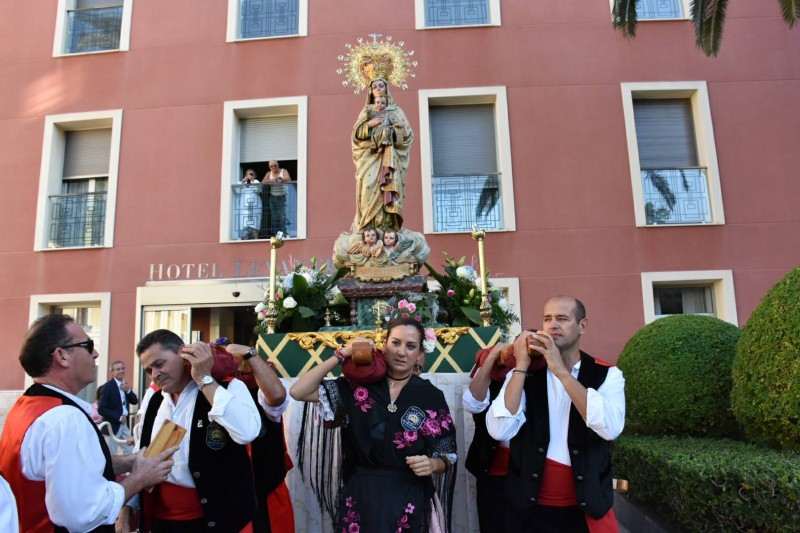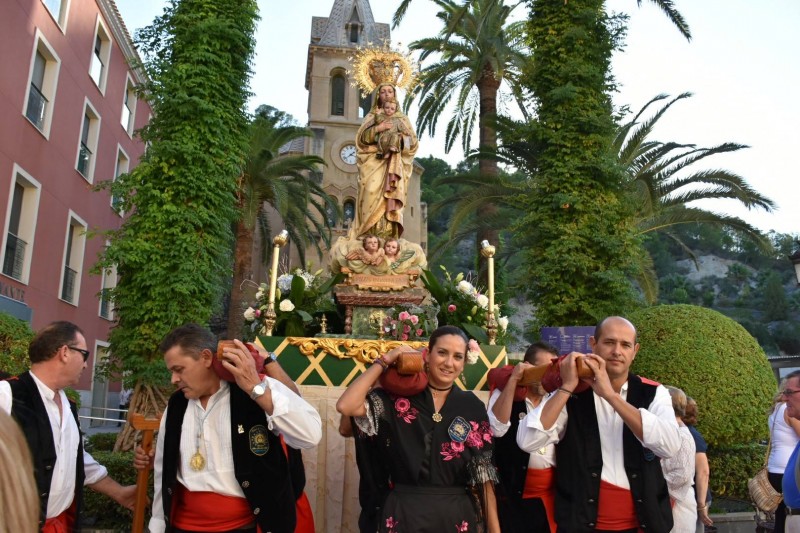- Region
- Vega baja
- Marina Alta
- Marina Baixa
- Alicante
- Baix Vinalopo
- Alto & Mitja Vinalopo
-
ALL TOWNS
- ALICANTE TOWNS
- Albatera
- Alfaz Del Pi
- Alicante City
- Alcoy
- Almoradi
- Benitatxell
- Bigastro
- Benferri
- Benidorm
- Calosa de Segura
- Calpe
- Catral
- Costa Blanca
- Cox
- Daya Vieja
- Denia
- Elche
- Elda
- Granja de Rocamora
- Guardamar del Segura
- Jacarilla
- Los Montesinos
- Orihuela
- Pedreguer
- Pilar de Horadada
- Playa Flamenca
- Quesada
- Rafal
- Redovan
- Rojales
- San Isidro
- Torrevieja
- Comunidad Valenciana
The church of the Virgen de la Salud in the Balneario of Archena
The medieval central European style reflects Modernism in Murcia in the late 19th century
The church of the Virgen de la Salud is part of the Balneario de Archena, the thermal springs spa complex which attracts thousands of visitors to the banks of the River Segura at the southern end of the Ricote valley all year round.

History
It was not until the second half of the 19th century that the town and thermal springs of Archena were finally confiscated from the religious and military Order of San Juan after almost 600 years, and when the springs were acquired by the Vizconde de Rías this marked the start of a period of development which led to the newly constructed spa resort becoming the most popular of its kind in Spain.(see History of Archena for full information)
The religious order of San Juan may have been removed from the town, but of course Archena and the rest of Spain remained devoutly Catholic, and the Vizconde realized that in order for the Balneario to be complete it needed its own place of worship. He therefore contracted architect José María Aguilar, and the result is a surprisingly Byzantine style of building, almost medieval in appearance, with a slender steeple which calls to mind central European architecture. These seeming incongruities are characteristic of the Modernist trends of the day, and some maintain that the real inspiration behind the buildings was Justo Millán, who designed the Teatro Romea and the Teatro-Circo Villar in Murcia as well as the bull rings of Murcia, Lorca, Cieza and Abarán.

But in fact this was not the first church alongside the thermal springs for which Archena was famed two thousand years ago, when the Romans ruled in Spain, and which have now made it a year-round tourist attraction. The first mention of a place of worship at the springs dates from 1724, and in 1738 it is known that it was dedicated to the Virgen de los Milagros.
By 1744 it was described as being in a “ruinous” state, and despite the installation of a church bell in 1771 the priest who held Mass here at the time lamented the almost complete lack of any ornamentation. Attempts were made by a Franciscan monk to raise funds for repairs, but a flood in 1785 damaged most of the spa complex and it can be supposed that the church was no exception.
Thus it was that by the time the thermal springs were acquired first by the Marqués de Corvera in 1850, and then by his brother the Vizconde de Rías, the church was barely if at all usable. After José María Aguilar designed the new building it took only a few years to complete (in stark contrast to the main church of San Juan Bautista in Archena itself!), and it is still used today, although it is dependent on the modern parish church of Corpus Christi, also in the town of Archena.
Architecture and religious artwork and imagery
The church is rectangular rather than cross-shaped, and consists of just one nave and one chapel, prolonged behind the altar by the sacristy. The buttresses and other supports for the arches dividing the nave into sections are visible both inside and outside, enhancing the medieval feel of the building.
One of the outstanding features of the exterior is the highly ornamental bell-tower, topped by a pointed steeple, while the decoration is also worthy of note, as is the staircase which leads up to the main door. Underneath this staircase is a small door leading to the crypt, where the mortal remains of the Vizconde de Rías and the Marqués de Corvera lie.
The exterior limestone finish on the main façade is an indication of the importance of the church in the eyes of the Vizconde de Rías.
Inside, the decoration is rather less original than on the outside. The figure of the Virgen de la Salud, who was named patron of Archena at the end of the Civil War in 1939, is normally housed in the niche within the altar screen, and is one of the few in Archena to have survived that conflict: the work of Sálvador Páramo, it dates from 1878, when it replaced a previous statue of the Virgen de los Remedios.
Most of the paintings on display are by local artist Vicente Sabater, although one of the most interesting is an oil painting showing Jesus healing a paralytic at Bethesda as described in the gospel of John. As for other imagery, the figure of Christ on the cross is by Enrique Salas.
Click for further information about the Archena municipality



